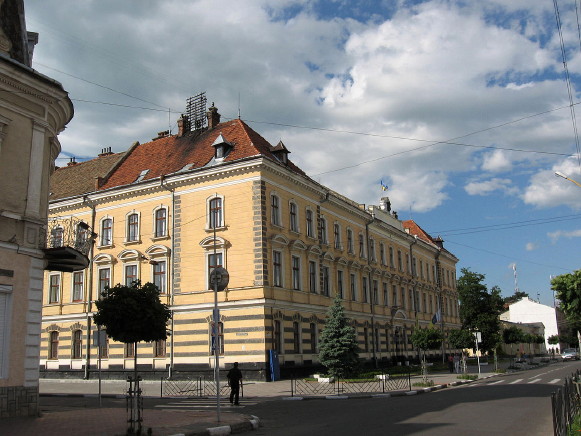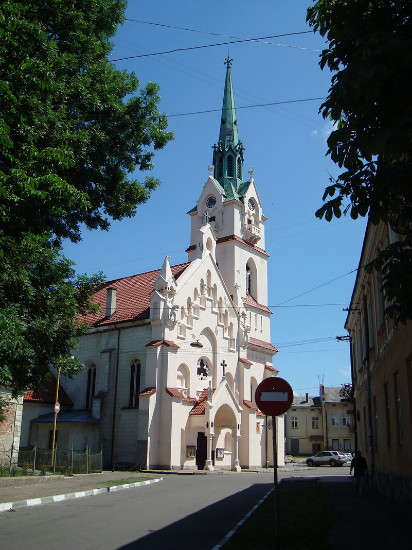Stryi
Stryi [Стрий; Stryj]. Map: IV-4. A city (2015 pop 59,629) on the Stryi River and a raion center in Lviv oblast. It is first mentioned in historical documents in 1385, when Galicia was under Polish rule. In 1460 the town was granted the rights of Magdeburg law. Stryi’s economic development can be attributed largely to its strategic location on the main trade route to Mukachevo through the Carpathian Mountains. Under Austrian rule (1772–1918) Stryi became a county center and the seat of a circuit court. It developed into an industrial and commercial town, and its population grew from 8,000 in 1843 to 12,600 in 1880, 23,200 in 1900, and 30,900 in 1910.
By the end of the 19th century Stryi was an important center of the Ukrainian national movement in Galicia. The town’s chief civic leaders were Yevhen Olesnytsky and Ostap Nyzhankivsky. Stryi was one of the first centers of the Ukrainian women's movement: the first women’s rally was held there in 1891, and the first edition of the women’s almanac Nasha dolia (Our Fate, 1893) was published there. Stryi was an important center of the Ukrainian co-operative movement: the Provincial Dairy Union (later the Maslosoiuz Provincial Dairy Union) was founded there in 1907, and the first Ukrainian provincial exhibition was held there in 1909. A Ukrainian gymnasium was opened in Stryi in 1906, and the newspapers Stryis'kyi holos (1894–5), Hospodar i promyslovets' (1909–11), and Pidhirs'ka rada (1910–11) appeared there. During the Ukrainian-Polish War in Galicia, 1918–19, the headquarters of the Stryi Brigade of the Ukrainian Galician Army were located in Stryi.
Under Polish occupation (1919–39) the city’s economy hardly grew, and by 1931 its population was only 30,900. In 1939 about 28 percent of the inhabitants were Ukrainian, 34.5 percent were Polish, and 35.6 percent were Jewish. Stryi became a leading center of Ukrainian resistance: its cells of the Ukrainian Military Organization and the Organization of Ukrainian Nationalists were among the most active in Galicia. The Ukrainian state gymnasium (1918–23) was replaced by Ukrainian departments in the Polish gymnasium, but a private Ukrainian women's seminary and a gymnasium run by the Ridna Shkola society were opened in the 1920s. After Lviv, Stryi had the largest Plast Ukrainian Youth Association organization in Galicia. A branch of the Lysenko Higher Institute of Music, the Stryi Regional Studies Museum Verkhovyna (est 1932), and many other cultural institutions served the Ukrainian community. The city's Ukrainian newspapers included Stryis’ka dumka (1933–9) and Ukraïns’ka muzyka (1937–9).
Under the Soviet regime the city’s industry was developed rapidly. Large machine-building, metalworking, and reinforced-concrete plants were set up. Light industry (fur and footwear) and the food industry were expanded. The city became an important railway and highway junction. The Stryi Ukrainian Music and Drama Theater was active until 1964. The city’s population grew to 36,200 in 1959 and 48,000 in 1970, and its ethnic profile changed sharply: in 1959, 68 percent of the population was Ukrainian, and 30 percent was Russian. There is the Stryi Regional Studies Museum Verkhovyna and three smaller museums in Stryi.
BIBLIOGRAPHY
Prichaska, A. Historja miasta Stryja (Lviv 1926)
Volodymyr Kubijovyč, Yaroslav Padokh
[This article was updated in 2016.]

.jpg)
